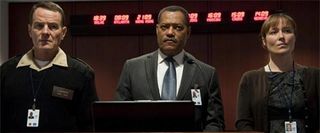
One can easily make the argument that storytelling is fully dependent on rich, full characters. Great ones can make us cheer when the hero wins in the end or bring us to tears when they lose. Strong personalities can organically inform decisions that, in turn, create realistic plot points and keep the story moving. If the audience doesn’t care about the protagonist, they have no incentive to keep paying attention. It’s because characters are so vital that ensemble movies make for a terrific challenge.
This Friday sees the release of Steven Soderbergh’s Contagion, a pandemic thriller starring Matt Damon, Laurence Fishburne, Gwyneth Paltrow, Kate Winslet, Marion Cotillard, Jude Law, John Hawkes, Bryan Cranston, Elliott Gould, Demetri Martin, and Jennifer Ehle. It’s an impressive cast to say the least, but unfortunately the film does struggle with the ensemble format. Most of the characters are under developed and some of them disappear for so long that you forget they’re in the movie. But while Contagion may not be a perfectly crafted ensemble film, they do exist and below we’ve explored seven of our favorites and analyzed what it is about the films that makes them work.

Ocean’s Eleven
by Katey Rich
Steven Soderbergh has a knack for collecting a lot of famous people to work with him, and he was never better at using them well than in the first Ocean's Eleven movie. The four lead actors on their own were dizzying enough (Clooney and Pitt and Damon and Roberts, all together!) but then Soderbergh added to their ranks familiar character actors-- Elliott Gould, Carl Reiner, Andy Garcia-- and a handful of oddball choices like Bernie Mac and Casey Affleck, building up an ensemble strong enough that the top-heavy big-name stars wouldn't topple it. Then Soderbergh threw this murderer's row into the same ridiculous scheme and watched them work together to run away with the movie. In Contagion the director uses his famous talents to link together unrelated stories, jumping across the globe and isolating the likes of Kate Winslet and Marion Cotillard in their own stories that never allow them to combine starpower. Ocean's Eleven, on the other hand, practically glows with it, and we're not just watching a lot of famous people goofing off together in Vegas, but actors genuinely working to make their unwieldy ensemble work. It's a trick so difficult to pull off that even Danny Ocean would be impressed.
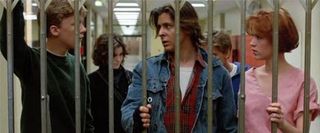
by Sean O'Connell
CINEMABLEND NEWSLETTER
Your Daily Blend of Entertainment News
Their identities are defined in the letter left for their bully of a principal: A brain; an athlete; a basket case; a princess; and a criminal. Combined, John Hughes’s Breakfast Club set the standard for modern high school archetypes. Factor in Paul Gleason’s short-tempered Richard Vernon and John Kapelos’s all-knowing custodian, Carl, and you have a seven-person ensemble without an ounce of fat. Credit Hughes, who writes memorable dialogue for each of his diverse characters, fluctuating between blood-drawing one-liners and soul-searching monologues that are delivered with humor and heart by his outstanding cast. In my humble opinion, Breakfast Club boasts the best “Brat Pack” ensemble, and in the words of a defiant John Bender, it’s not even close, bud.
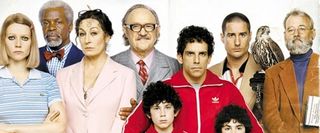
The Royal Tenenbaums
by Jesse Carp
Wes Anderson's The Royal Tenenbaums falls into a genre of flicks that frequently dabble in ensemble building because they basically have to by the very nature of their composition. In order to make a family drama (or dramedy) you must first assemble the family and I'd argue you can find no better than Anderson's wonderfully eccentric extended family in Tenenbaums. The writer-director crafts his ensemble not as a group of characters integral to some plot machinations but as people integral to a story. Anderson is a storyteller first and foremost, with his tales tending to revolve around a large group of extremely well-defined characters, in this case the troubled Tenenbaum family and friends.
The five immediate family members are especially well drawn; they each have a backstory worthy of their own film, complete with their own cast of characters which only broadens the ensemble even further. Hell, in an early draft Ritchies' falcon, Mordecai, was going to be another character, played by Jason Schwartzman. Anderson felt that he wasn't absolutely necessary to the story and pulled the ol’ man-bird switcheroo, an anecdote that perfectly exemplifies how his films are these large ensemble pieces, yet each piece must still have a significant part to play. There are no arbitrary characters created just to add a name to the marquee.
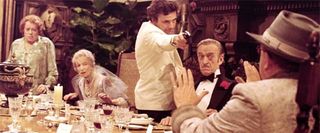
Murder By Death
by Brian Salisbury
Murder By Death is not merely one of the funniest comedies of all time; it’s also The Avengers of literary detectives. Though given not-so-subtle pseudonyms to avoid copyright suits, popular sleuths Sam Spade, Charlie Chan, Hercule Poirot, Miss Marple, and the Thin Man are represented by comedic legends such as Peter Falk, Peter Sellers, and David Niven. The film is a grand, old school farce crafted by none other than playwright Neil Simon in which every single character is vital to the out-of-control plot. Removing a single one of them (even be it one of the supporting performances from Eileen Brennan, Maggie Smith, or Sir Alec Guinness) would also completely undermine the movie’s comedic strength. Even Truman Capote, author of the crime novel In Cold Blood and celebrated Hollywood eccentric, turns in a great performance as the dinner party’s mysterious host. Murder By Death spins all of its star-powered ingredients to culminate into one fantastic comedy stew.

Love, Actually
by Kelly West
Balance is key with an ensemble cast and Love Actually finds that perfectly, allowing us to care about each and every one of the characters equally, having been given the opportunity to get to know them as the movie progresses. A film with a cast that consists of Bill Nighy, Colin Firth, Emma Thompson, Andrew Lincoln, Keira Knightley, Liam Neeson, Rowan Atkinson, Laura Linney and Hugh Grant runs the risk of being cluttered with too many big names and big performances, not to mention too much story to tell. Instead, not only does Love Actually find a way to tell each love-story in a way that’s humorous and heart-felt, but it makes the most of each character and magnitude of talent it has from its cast. From the grieving widower, to the man who’s in love with his best-friend’s wife; from the child experiencing his first real crush to the woman who falls for her boss; from the boss who falls for his secretary to the wife who realizes it’s happening, the stories flow together seamlessly, building up a momentum and bringing the characters closer together as the movie reaches its climax.
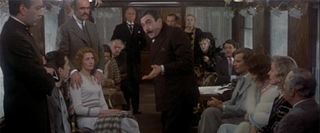
Murder On The Orient Express
by Mack Rawden
Like Contagion, Murder On The Orient Express is about space, contact and random chance. It’s about how one foolish and selfish murder can ripple through the lives of many and how the addition of one passenger can threaten even the most carefully orchestrated grasp at making things right. Famed detective Hercule Poirot was never supposed to be on the Orient Express that fateful day, but there he is, staring at the dead body of a reprehensible villain who too deserves justice. Through a series of contentious interviews filled with mind games and accusations, the Belgian interrogates and strips bare each of the thirteen suspects, exposing joy, misery, pain and a score of brilliant acting performances. From the garrulous and enchanting Lauren Bacall to the nervous and finicky Anthony Perkins, every role is carefully cast and contributes in its own way to both the film’s careful energy and its overall plot. Apart from Albert Finney’s Academy Award-nominated protagonist, none of the characters appear in a majority of the scenes, but all are absolutely essential to pulling off one of Agatha Christie’s most perfectly coordinated mysteries.
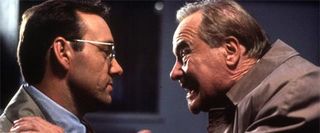
Glengarry Glen Ross
by Eric Eisenberg
While it seems contrary to the concept, the greatest ensemble films are the ones that not only get characters to mesh well as a group, but exist as individuals as well. If a writer has done their job right, audiences should walk away from the screening knowing the names of all the players and their defining characteristics. David Mamet does this with a big fucking exclamation point in Glengarry Glen Ross. Assembling what is arguably the greatest all-male cast of all time, the script gives each character one baseline distinguishing trait and then has the performers dig their claws into it. Shelley Levene (Jack Lemmon) is desperation; Ricky Roma (Al Pacino) is pure confidence; George Aaronow (Alan Arkin) is pathetic; Dave Moss (Ed Harris) is anger; John Williamson (Kevin Spacey) is passive-aggressive; and Blake (Alec Baldwin) is pure brass balls. Once these personalities are established, Mamet moves them around like chess pieces and establishes brilliant dynamics: the strong vs. the weak, the rich vs. the poor, and the vengeful vs. the screwed. By the time the film is over you feel as though you’ve been sitting in a corner desk watching these men interact for a lifetime.
Most Popular





